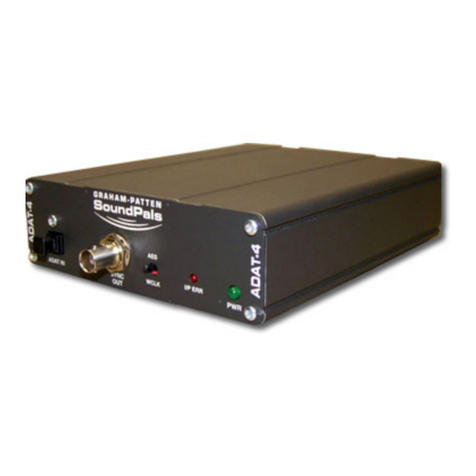
Table of Contents
ii • Table of Contents ADC-24 User Guide
Table of Contents ii
Introduction 1
What are SoundPals?.............................................................................................................. 1
Documentation Conventions.................................................................................................... 1
Signals and Values .................................................................................................................. 1
Warnings.................................................................................................................................. 1
Unpacking and Inspection ....................................................................................................... 2
Power Supply Note .................................................................................................................. 2
ADC-24 3
About the ADC-24.................................................................................................................... 3
ADC-24 Installation.................................................................................................................. 5
Connecting Power ............................................................................................................. 5
Connecting Inputs ............................................................................................................. 5
Connecting AES Reference ..............................................................................................5
Connecting Outputs........................................................................................................... 5
ADC-24 Operation ................................................................................................................... 6
ADC-24 Interconnection ..........................................................................................................7
Basic - Inserting Analog Equipment .................................................................................. 7
Basic - Analog Input to Digital Mixer ................................................................................. 7
Advanced - Multiple Analog Inputs to Digital Mixer........................................................... 8
ADC-24 Internal Jumpers ........................................................................................................ 9
ADC-24 Troubleshooting ....................................................................................................... 11
ADC-24 Specifications...........................................................................................................12
Audio Specifications ........................................................................................................ 12
Environmental Specifications and Dimensions ............................................................... 12
Inside the Module ........................................................................................... 13
In This Section ....................................................................................................................... 13
Before You Begin................................................................................................................... 13
Opening the Module ..............................................................................................................13
Closing the Module ................................................................................................................ 13
External Power ................................................................................................ 14
About Power Supplies ...........................................................................................................14
CE Compliance...................................................................................................................... 14
Portable Power Sources ........................................................................................................ 14
Power Supply Specifications ................................................................................................. 14
Power Supply Sources .......................................................................................................... 15
























